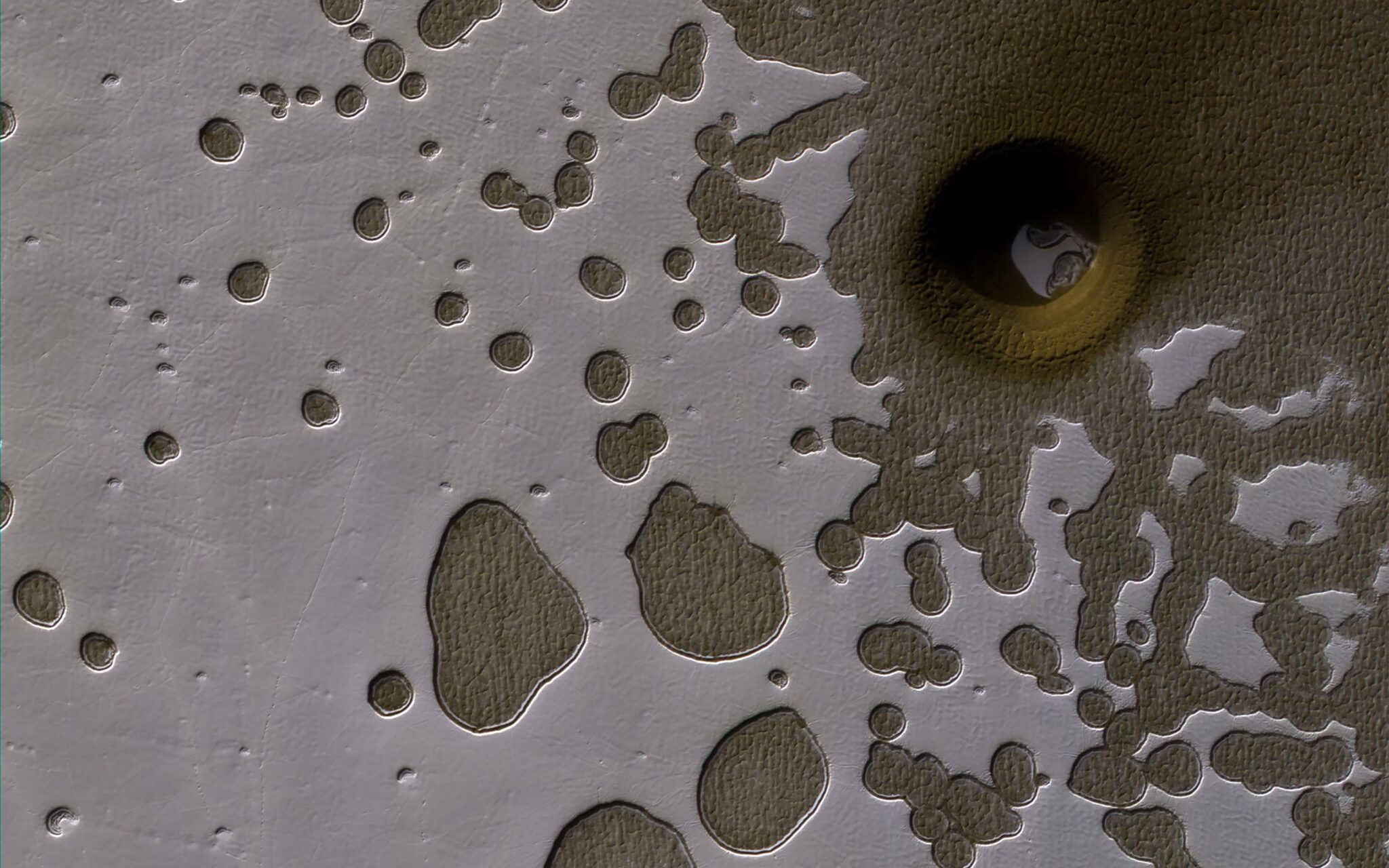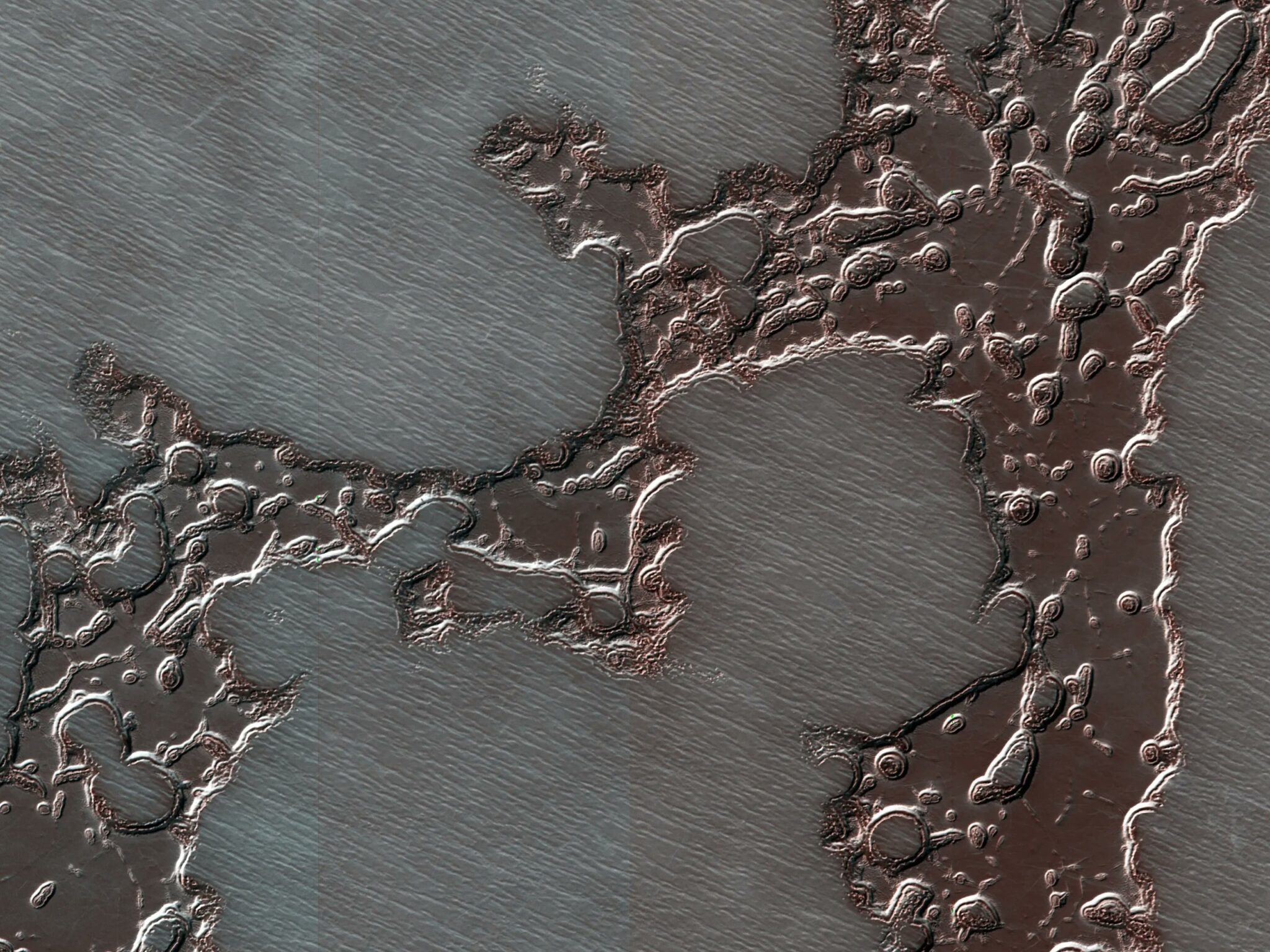Unlike the rest of the planet’s red surface, the south pole of Mars is covered with bizarre formations similar to Swiss cheese. For decades, planetary scientists have wondered how such a formation is possible. Since it was long believed that this layer could not be stable over a long time. Only now scientists have found the answer to this scientific riddle on Mars.

Although scientists previously knew what these formations consist of — these are layers of frozen carbon dioxide and frozen water that have been settling for many years. But it was difficult for researchers to track exactly how these formations developed and transformed over shorter periods of time.
In a study published in the journal Geophysical Research Letters, planetary scientist Peter Buhler from the Institute of Planetary Sciences in Tucson, Arizona, presented a model reflecting the 510-thousand-year history of climate, and how the fantastic formation of “Swiss cheese” on the planet had changed. This discovery turned out to be an essential step for understanding the water cycle of our neighboring planet.
Cycles over 100 thousand years
“Mars experiences 100,000-year cycles in which its poles vary from tilting more toward or away from the Sun. These variations cause the amount of sunlight shining on each latitude band, and thus the temperature of each band, to cycle, too. Water ice moves from warmer to colder regions during these cycles, driving Mars’ basic long-term global water cycle,” explained Buhler.

To test his hypothesis, the scientist used a numerical model “to simulate the accumulation of layers over time,” which he repeated “about a billion times” until he was finally able to statistically determine which specific configuration of the water sediment best corresponded to the layers of “Swiss cheese” presented on the planet today.
Circulation of water and carbon dioxide on Mars
“The water layer thicknesses tell us how much water vapor has been in Mars’ atmosphere and how that water vapor has moved around the globe. The carbon dioxide layers tell us the history of how much of the atmosphere froze onto the ground, and thus how thick or thin Mars’ atmosphere was in the past,” explained the scientist.
The study can give us a deep understanding of the ancient history of Mars. But understanding the planet’s climate models is not only an important part of understanding how our neighboring planet originated. If humans ever colonize Mars, understanding its atmosphere and the water cycle will be key to our survival on the Red Planet.
Previously, we reported evidence of the existence of liquid water on Mars.
According to psi.edu
Follow us on Twitter to get the most interesting space news in time
https://twitter.com/ust_magazine

